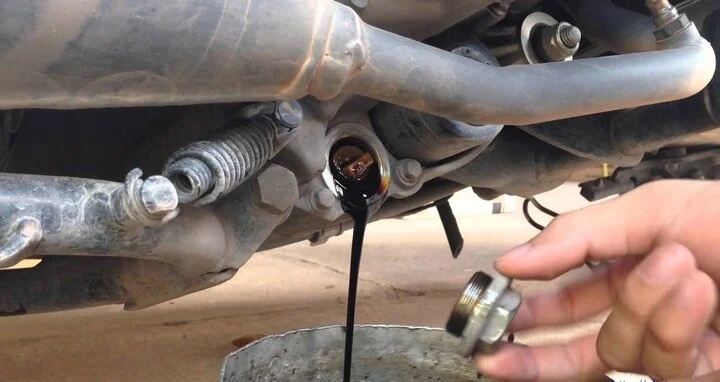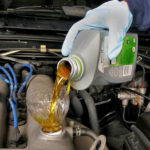Changing engine oil based on mileage
The first and most common mistake nowadays is how to determine when to change oil. According to this, most motorcycle users in Vietnam have the habit of calculating the mileage of the motorcycle to determine when to change the oil. However, this method is only relatively accurate and not suitable for all cases.

Changing the oil for the motorcycle incorrectly can cause damage to the engine and reduce the lifespan of the motorcycle. (Illustration: daunhotpro)
In normal conditions, motorcycles that are regularly used can have an oil change interval of every 1,000 – 1,500 km, which is relatively reasonable. However, for special cases such as infrequently used motorcycles or motorcycles that are used frequently on hilly terrains, relying on the mileage to determine the oil change is no longer reasonable.
For these cases, if the motorcycle has not reached the above mileage, the owner should still change the oil after about 12 months. Or if the motorcycle is not used, it is best to change the oil after about 3 months. The reason is that the oil will quickly deteriorate even if the motorcycle is not in operation.
Hesitating when noticing signs that the motorcycle needs an oil change
Engine oil is considered a protective layer that helps extend the lifespan of the motorcycle engine. However, due to not understanding the importance of oil or being negligent, many motorcycle owners hesitate and do not pay attention to regular oil changes for their motorcycles. This wrong mindset will make the motorcycle sluggish, poorly performing, and frequently emit loud noises when driving.
According to many experts, the best interval for changing the motorcycle oil is 2,000 km for clutch motorcycles and 1,000 – 1,500 km for automatic motorcycles. However, this number can vary depending on other practical factors such as environmental conditions, operating power of the motorcycle, oil quality, etc.
If the motorcycle is frequently used, the oil in the motorcycle will quickly deteriorate, so you have to change it earlier if you don’t want your motorcycle to encounter regrettable problems.
Not fully draining the old oil
In the process of changing oil, another common mistake that many motorcycle users make is being careless and not fully draining the old oil in the container. This may seem insignificant, but in reality, it can have consequences for the motorcycle if it happens repeatedly.
The reason is that the used oil, after the usage period, not only loses its effectiveness but also contains a lot of impurities and metal debris due to the friction process. These things can cause damage to the engine, so if the old oil is not fully drained, in the long run, it will cause engine damage and reduce its lifespan.
Therefore, if you are changing the oil yourself, you need to patiently wait for the old oil to drain completely. At the same time, tilt the motorcycle so that the remaining oil in the engine details flows out completely. Then, use an air gun to blow into the engine compartment to make the oil splash out clean.
Leaving it to the maintenance staff
As a habitual practice, many customers nowadays do not pay attention to what type of oil their motorcycle is being replaced with, where it originated from when they go for servicing. They leave all the decision-making power to the maintenance staff. The result is that after changing the oil, many motorcycle owners only complain why their motorcycles have been running poorly and consuming more fuel even though they were recently given an oil change. Until they realize the problem and take the motorcycle for inspection, they find out that the motorcycle was using incompatible oil.
Although maintenance staff are professionals, you should not let them decide everything on their own. Some staff may use expensive motorcycle oil for the sake of sales and profit, but it may not be suitable for the type of motorcycle you are using.
Moreover, if unfortunately encountering an untrustworthy repair shop, the staff can use substandard and low-quality oil, causing your motorcycle to deteriorate and degrade quickly.
Therefore, to avoid this situation, it is best to research the various types of oil beforehand and then exchange and consult with the repair staff to choose the best and most suitable product for your engine.
According to VTC news
































